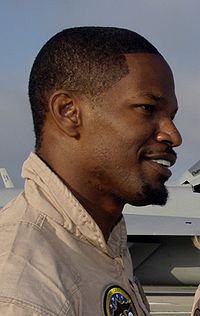Goatee

A goatee is a beard formed by a tuft of hair on the chin. The goatee underwent a renaissance in the 1990s, when a close-cropped variant with an integrated moustache was popularized by the musicians, actors and sports heroes of the day.
Like the beard, the goatee is most commonly seen in combination with a moustache. However, since the beginning of the 21st Century, this has begun to change and new styles have begun to emerge. Frequently, goatees are worn concomitant with either very short hair styles, or even completely shaved heads.
In modern American slang, the phrase "raising the goatee" means to have a person's goatee raised at someone in a sign of displeasure or contempt. The term, which is a take on the phrase "raised eyebrows", was first brought into popular usage because of the aggressive facial expressions of Pittsburgh Steelers coach Bill Cowher (who wears a goatee) to his players and officials from the sidelines of National Football League games.[citation needed]
Goatee styles

- Musketeer - a small, pointed goatee with an English moustache (narrow, prominent), as worn by the French mousquetaires
- Van Dyck - a thick goatee and moustache with upturned ends, as worn by the 17th century Flemish painter, Sir Anthony van Dyck. In modern usage, a Van Dyck is often any moustache and goatee combination.

Similar facial hair styles
- The royale (or impériale) is a tuft of hair under the lower lip (without a goatee, but perhaps worn with a moustache). While the royale was historically worn by French officers as a badge or adornment of military rank or status, it is not technically a goatee. It is sometimes referred to as a "soul patch", "jazz dot", "nubbin", "flavor saver", or "trombone lip".[citation needed]

- A tiered goatee is a goatee that has variable lengths of hair to create a multi-leveled beard. This is used to create some sort of distinction between different sections of a beard.
- Chin beard - a beard formed solely by a tuft of hair on the chin (i.e. lacking accompanying mustache)
- Circle beard - a chin beard and moustache which are connected by hair on either side of the mouth to form a complete circle.
Goatees in fiction
In fiction, goatees are often associated with antagonists. In satirical fiction, the goatee is often a symbol of a character's evil twin, while many historical portrayals of the devil sport a goatee. Mirror, Mirror, an episode of the television series Star Trek: The Original Series, introduced such a counterpart to the character Spock in a Mirror Universe. The only physically distinguishing characteristic between the good and evil versions of the character was a goatee. In Doctor Who, the Doctor's arch enemy the Master wears a goatee in his two most prominent incarnations played by different actors.
The Star Trek Mirror Universe idea has been parodied and re-used in a number of science fiction and comedy television shows including Mystery Science Theater 3000 (episode Last of the Wild Horses), South Park (episode Spookyfish in which Cartman's evil twin is actually good), Futurama (episode Lesser of Two Evils which introduced Flexo), and Family Guy (episode 5x02, Mother Tucker).
